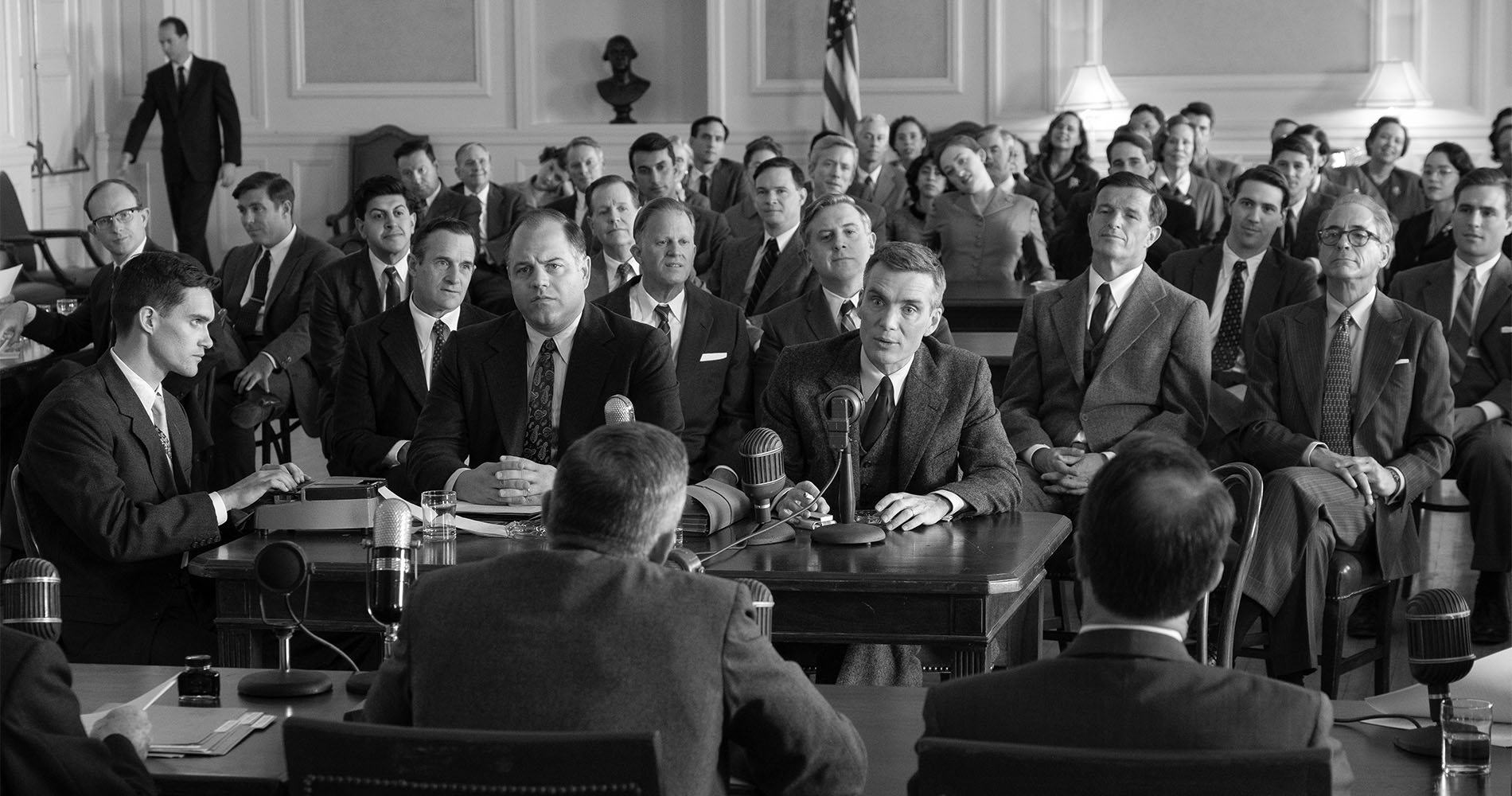Oppenheimer: Condensed chaos, glimpses of grace
Both the subject and Christopher Nolan's craft would have been better served by a miniseries - or by expanding one of this film's dazzling array of cinematic styles into a standalone film.
Both the subject and Christopher Nolan's craft would have been better served by a miniseries - or by expanding one of this film's dazzling array of cinematic styles into a standalone film.
Here is the first thing that stands out in Christopher Nolan’s much-trumpeted, epic biopic of J. Robert Oppenheimer, father of the nuke: at three hours, it’s both too long and not long enough. Crammed into these 180 minutes is eventful, passionate, contradictory life story of one of the world’s most important scientists; several tempestuous love affairs; two courtroom dramas; a primer on nuclear physics, a course in World War Two history, a visit to the Red Scare and the Cold War, and a deliberation of role of science in politics, and vice versa.
Even a handful of those would make more than enough material for a two-parter, or for an epic miniseries that could have been the crowning achievement of that genre’s golden age.
Instead, we have a finely cut, densely arranged mosaic of a film. Three loosely interspersed, qualitatively uneven acts, are scripted, filmed, acted and directed in strands drawing from several different genres, with the rich, dense complexity of the puzzle all but crowding out the story - which, in itself, is as crowded as it gets. It’s hard not to wonder if Nolan was stumped by the challenge of directing a biographical film as opposed to a fictionalised historic drama like Dunkirk; you can almost see him straining to decide which detail is more essential for our understanding of his hero, and which can be left out, and making more than a few wrong moves.
Much of the worst of this comes in the film’s first act, dealing with Oppenheimer’s early life. It's chaotic and arduous, resembling an exposition section in a stage play where actors run out in different costumes to exchange a few lines, catch you up on this or that development and run off again. This tiresome enough on a stage, but is positively exhausting in this film, of which it takes up a solid 40 minutes. The second act - Los Alamos - is good old-fashioned historical drama, nothing more, nothing less, with the exception how Nolan depicts the first successful nuclear detonation test - the Trinity. The third act is perhaps the best, providing both the greatest drama and the greatest acting of the film; but more on this below.
Cinematically, Oppenheimer is perhaps the most anthological film since Cloud Atlas, but too conscious of its own dramatic and historic weight to truly revel in the freedoms an anthology allows. We have Mad Men cocktail parties and illicit liaisons in chic, sweaty interwar California bungalows; we have austere white classrooms, with hunky men in three-piece suits pondering a blackboard, a kind of minimalist, stripped down Beautiful Mind. We have snippets of vintage, Oliver Stone-type Washington drama, with a memorable turn from Harry Truman (played by, who else, Gary Oldman.) We even associative flashes of unrelated footage, a la early Pink Floyd video art.
And the most captivating, if completely incongruous, references come when we see Oppenheimer and his wife, Kitty, at his ranch in New Mexico. These sections feel like a deeply crafted homage to John Ford - even the colours seem like a mid-60’s western, restored and colourised. It’s one of many moments you catch yourself thinking that one strand alone could have made a fantastic movie: in this case, Cillian Murphy’s Robert and Emily Blunt’s Kitty Oppenheimer, on a break from Los Alamos, riding horses in the desert, figuring out their love affair, discussing the atomic bomb.

*
The bomb itself could have easily taken over the entire film - much of the fascination with the project was the speculation of how Hollywood’s most meticulous and imaginative special-effects director would tackle the most visually spectacular cataclysm engineered by man. Instead, it arrives halfway through, forming a keystone in the narrative arch but by no means the arch itself. Nolan’s clever treatment makes this perhaps the most surprising moment in the film, no mean achievement considering it’s also the most widely anticipated. Without too much of a spoiler, it’s also an extreme departure from Nolan’s usual way of handling things that go boom or twist our reality - in a refreshing way, especially after Tenet.
More on-brand, sadly, is Nolan’s handling of dialogue. This might have been the fault of the particular cinema where I watched the film, but the spoken lines appear to have been completely buried under the soundtrack - and under a myriad aural details, included out of Nolan’s respect for the realism of a conversation: the clearing of throats, the creaking of furniture, the change in volume depending on where a character might be facing, et cetera. The received wisdom appears to be that this is the-film to be watched at an IMAX; but between the minimalist special effects and the inaudible dialogue, there’s a lot to be said for watching it on a home projector, with subtitles.
The film’s ever-increasing tilt toward minimalism also results in the most dramatic, spellbinding section coming in the third act, where Oppenheimer and his allies are fighting for his security clearance - and by extension, his political life - during the postwar Red Scare, when his long standing leftist politics acquired greater weight than his contribution to the war. Forget Ron Howard, Oliver Stone and Robert Ford: we are in Sidney Lummet territory, where terrific actors have to make the utmost out of the bare, cramped setting of a meeting room, to carry a film as they decide on somebody’s fate.
Thankfully, they’re not twelve angry men this time: in a film sparse and sometimes cringeworthy crude about its female characters, the film’s best performance comes in this section, from Blunt. Her role appears to require two dramatic modes here: throwing fragile objects at walls in drunken rage, or acting entirely with her face. The security hearing demands the latter, and she does it marvellously - communicating contempt for the system, effortless superiority over the men interrogating her and her hard-won, hard-worn determination to stand by the man she chose, all in a handful of crisp lines and the tiniest variations of expressions. If anyone deserves an Oscar for this movie, it's Blunt.

As for the story itself, the big questions, the topicality? In a way, this is the least interesting part of the film, despite the reintroduction of the threat of nuclear war via Ukraine, and despite bewildering recent attempts in the American media to equate Oppenheimer with, say, Fauci.
This, however, is not really Nolan’s fault. We live in the world Oppenheimer made, both with his bomb and with his subsequent campaign for nuclear regulation; his generation of politicians, scientists and activists set the parameters by which we operate today, and which are unlikely to change anytime soon. If you want a political film about the dramatic choices still facing us today - “us” as in societies, and “us” as individuals trying to live our lives as decently as we might - go see Barbie.
We want to bring campaigning back into journalism. Lend us a hand, and get our weekly newsletter and magazine editions in your inbox, for free.